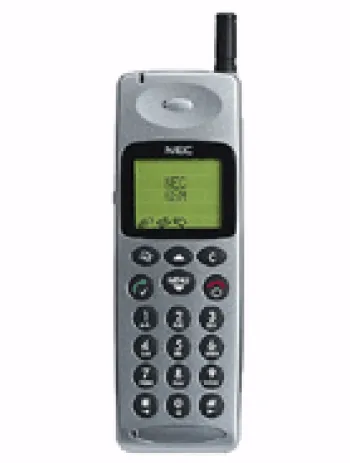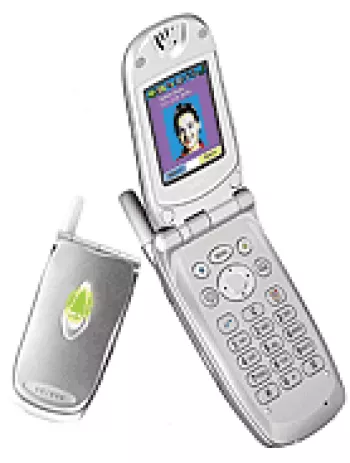
Overview of the NEC G9D+
The NEC G9D+ is a feature phone that was announced in 1997 and is notable for being a product of an era where mobile communication was still developing its identity. This device is a reflection of the transition period when mobile phones began to proliferate. Despite being discontinued now, the NEC G9D+ represents a unique aspect of the history of mobile devices.
Design and Build
The NEC G9D+ comes with dimensions of 145 x 49 x 22.5 mm and weighs approximately 200 grams, making it considerably bulky when compared to modern smartphones. The design was typical of late 1990s technology, with a blocky form that prioritized function over aesthetics. The device utilized a Mini-SIM, which was a standard in that era. Despite the absence of a vivid display or ergonomic design, the NEC G9D+ was constructed with durability in mind, capable of withstanding the rigors of frequent use.
Display
Sporting an alphanumeric display, the NEC G9D+ featured a simplicity that aligned with its era. The screen resolution was limited to showing 4 x 12 characters, which was adequate for basic texting and making calls. The minimalistic display did not support graphics or images, common for most feature phones of its time.
Network and Connectivity
The NEC G9D+ operated on GSM technology with the supported bands being GSM 900. However, it lacked advanced connectivity features such as GPRS and EDGE, indicative of a time when mobile internet was not yet common. The device did not offer connectivity options beyond basic voice calls and SMS, which was suitable for its intended purpose as a basic communication tool.
Memory and Storage
This device did not include a card slot, which meant users were limited to the internal memory of the phone. Detailed specifications about phonebook capacity or call record storage are not available, but these were typically modest by modern standards, as the focus was solely on essential services.
Sound and Alerts
The sound system of the NEC G9D+ was elementary, lacking a loudspeaker and a 3.5mm jack. Alert types were restricted to vibration and monophonic ringtones, which were standard during the 1990s. This limited audio capability was reflective of an era when phones were not yet expected to serve as multimedia devices.
Battery Performance
The NEC G9D+ was powered by a removable NiMH battery. Despite its compact size, the battery provided sufficient performance for its time, with a standby time of up to 56 hours and a talk time of up to 210 minutes with the high-capacity option. These figures, although modest by today’s standards, were sufficient for the typical user's needs back then.
Features and Functionalities
In terms of features, the NEC G9D+ functioned primarily as a communication device. It supported SMS for messaging, though it did not come equipped with a browser, games, or Java support. The device also lacked a clock and alarm function. Essentially, it was designed to fulfill basic telephony needs, focusing on reliability rather than multifunctionality.
Final Thoughts
While modern devices boast a plethora of features that integrate seamlessly into an ever-connected digital world, the NEC G9D+ serves as a reminder of simpler times in mobile technology history. Its robustness, straightforward functionality, and purpose-driven design made it a practical tool for communication in its time. Although technological advancements have rendered such devices obsolete, they remain valuable for understanding the evolution of mobile phones and appreciating how far technology has come.
Key Features of NEC G9D+
- Supports GSM 900 network technology, ensuring basic connectivity.
- Compact dimensions of 145 x 49 x 22.5 mm, making it easy to handle.
- Offers a Mini-SIM slot for standard SIM card compatibility.
- Comes with an alphanumeric display capable of showing 4 x 12 characters.
- Equipped with a removable NiMH battery that provides up to 210 minutes of talk time.
- Supports SMS messaging for basic communication.
- Includes vibration and monophonic ringtones for alert notifications.
NEC G9D+ Disadvantages
- Lacks modern network capabilities: No GPRS or EDGE support.
- Outdated and bulky design with weight of 200 g.
- Limited display: Alphanumeric with minimal resolution of 4 x 12 characters.
- No camera features available.
- Absence of multimedia features: No loudspeaker, no 3.5mm headphone jack.
- No connectivity options like WLAN, Bluetooth, and USB.
- No positioning or radio functionality.
- Basic messaging capability, restricted to SMS only.
- No additional features like Clock or Alarm.
- No gaming or Java support.
- Short battery life in comparison to newer models.
View Also
More Phones
All Rights Reserved +14266 Phones © Mobilawy 2025

























